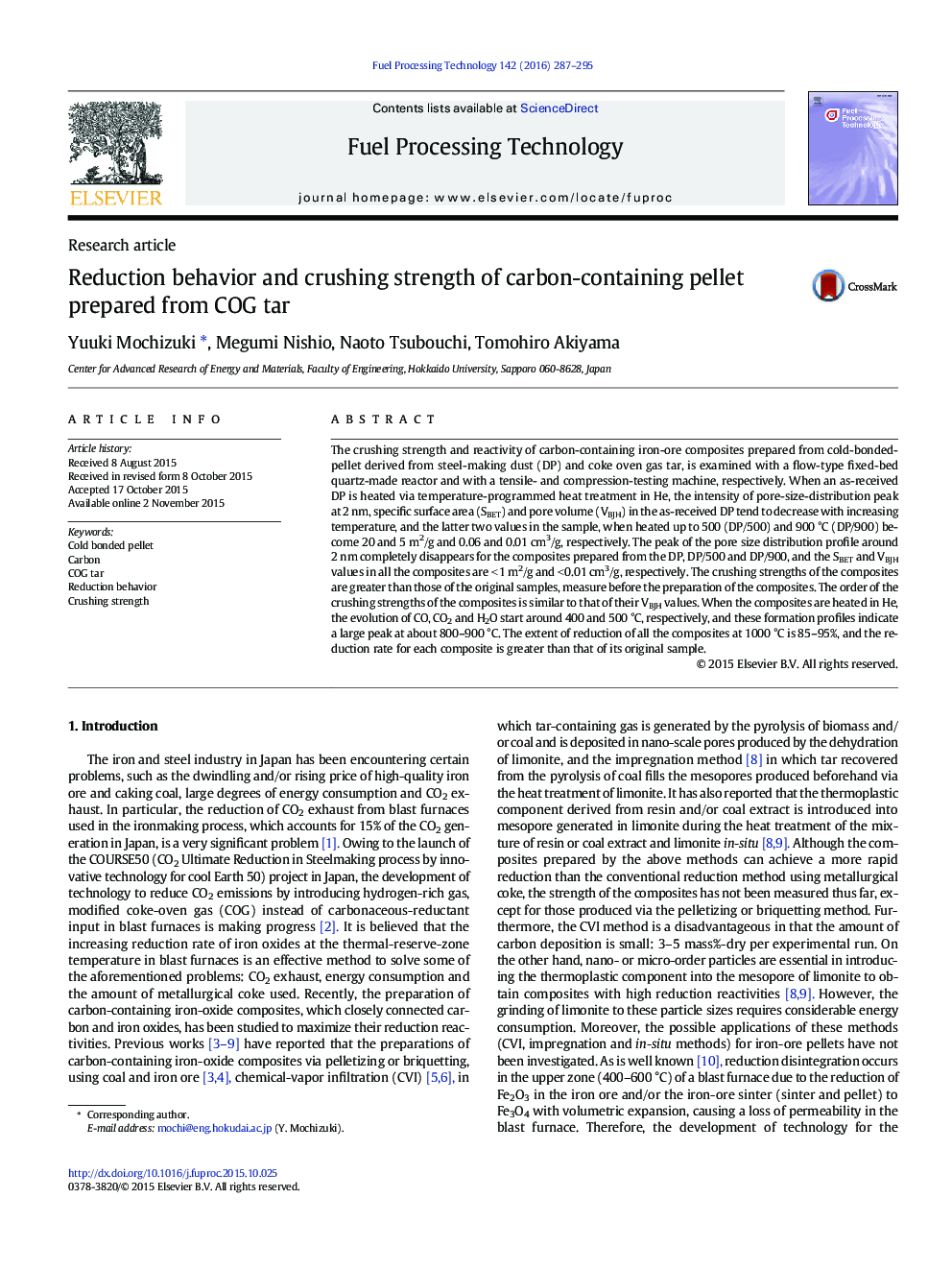| Article ID | Journal | Published Year | Pages | File Type |
|---|---|---|---|---|
| 6656732 | Fuel Processing Technology | 2016 | 9 Pages |
Abstract
The crushing strength and reactivity of carbon-containing iron-ore composites prepared from cold-bonded-pellet derived from steel-making dust (DP) and coke oven gas tar, is examined with a flow-type fixed-bed quartz-made reactor and with a tensile- and compression-testing machine, respectively. When an as-received DP is heated via temperature-programmed heat treatment in He, the intensity of pore-size-distribution peak at 2 nm, specific surface area (SBET) and pore volume (VBJH) in the as-received DP tend to decrease with increasing temperature, and the latter two values in the sample, when heated up to 500 (DP/500) and 900 °C (DP/900) become 20 and 5 m2/g and 0.06 and 0.01 cm3/g, respectively. The peak of the pore size distribution profile around 2 nm completely disappears for the composites prepared from the DP, DP/500 and DP/900, and the SBET and VBJH values in all the composites are < 1 m2/g and < 0.01 cm3/g, respectively. The crushing strengths of the composites are greater than those of the original samples, measure before the preparation of the composites. The order of the crushing strengths of the composites is similar to that of their VBJH values. When the composites are heated in He, the evolution of CO, CO2 and H2O start around 400 and 500 °C, respectively, and these formation profiles indicate a large peak at about 800-900 °C. The extent of reduction of all the composites at 1000 °C is 85-95%, and the reduction rate for each composite is greater than that of its original sample.
Related Topics
Physical Sciences and Engineering
Chemical Engineering
Chemical Engineering (General)
Authors
Yuuki Mochizuki, Megumi Nishio, Naoto Tsubouchi, Tomohiro Akiyama,
